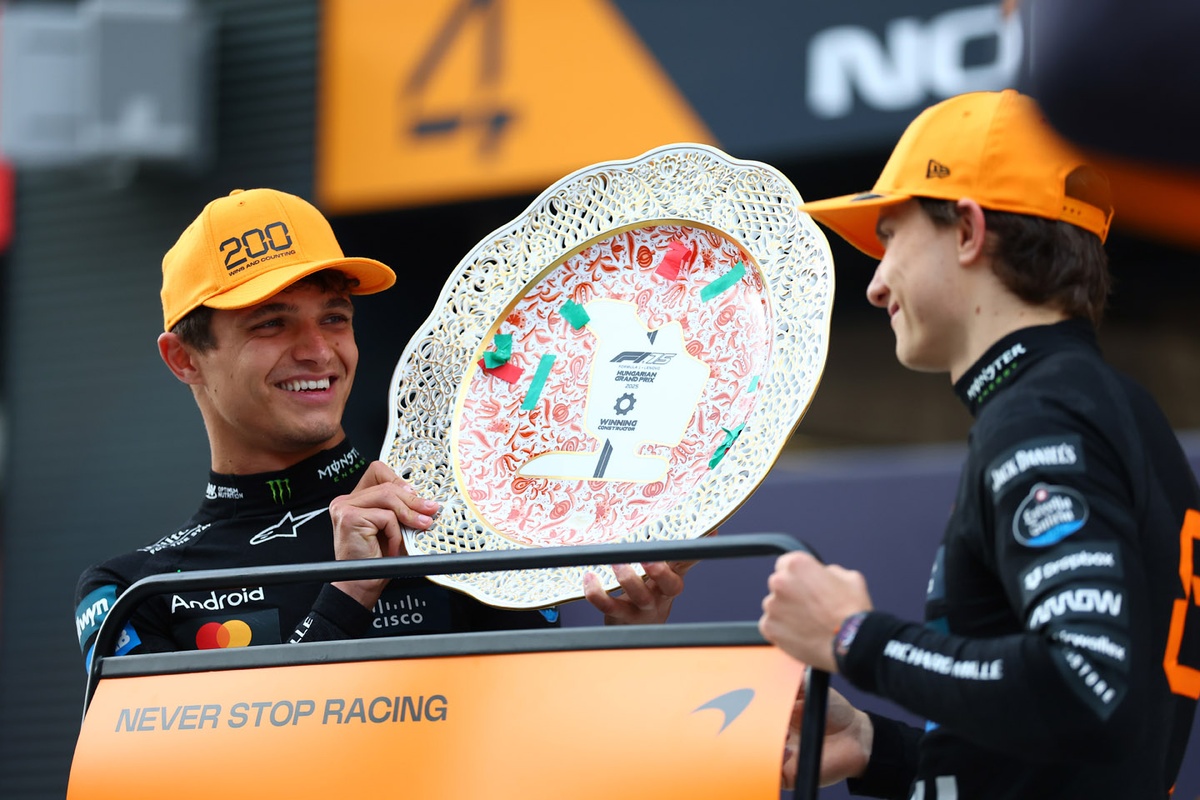
A Bold Strategy in the Formula 1 Title Race
The intense rivalry between Lando Norris and Oscar Piastri in Hungary has highlighted a bold approach by McLaren in its pursuit of the Formula 1 title. The team is not shying away from risk, allowing both drivers to take aggressive strategies that could lead to victory. This philosophy was evident when Norris, after losing ground at the start, opted for an ambitious one-stop strategy that ultimately won the race. However, this approach isn't without its challenges.
A week earlier, in Spa, the roles were reversed when Norris' decision to use a harder tyre compound didn’t pay off. Despite these fluctuations, the message from McLaren remains clear: each driver should make decisions based on what they believe will secure a win. This doesn't guarantee a 1-2 finish, but it emphasizes the importance of winning the race itself.
This strategy is inherently risky, and there's a possibility it may cost McLaren results in the future. History shows that such an approach can be dangerous. In 2007, the rivalry between Fernando Alonso and Lewis Hamilton led to a contentious battle that allowed Kimi Raikkonen to capitalize and claim the championship.
Some might argue that McLaren has an easier time because their car is consistently competitive. With the second-best team status shifting weekly, the team can afford to let its drivers race each other hard. Zak Brown, the team's executive director, acknowledges the risks but believes the benefits of giving both drivers equal opportunities outweigh the consequences.
"We know the risk of not throwing our weight behind one driver, but we will give Oscar and Lando equal opportunity to fight it out on track to win the drivers’ world championship," Brown said. "That’s exciting for us, and for the sport."
Internal Benefits and Long-Term Gains
Letting the drivers compete isn't just about public relations or the good of the sport; there are internal reasons why this approach benefits McLaren in the long run. Having two equal number ones helps prevent either driver from feeling disillusioned with their opportunities at the team. Both Norris and Piastri understand that in December, the best man will take home a maiden world title, and the competition resets next March.
"We believe the benefits of racing this way far outweigh the consequences – despite the fact we know incidents can happen," Brown added.
Team principal Andrea Stella echoed this sentiment, noting that the approach doesn't make life easier for the management. “We are also racing in a certain way, which is open and gives our drivers the opportunity to express their talents, their aspirations, their quality, their constant development,” Stella said.
Trust and Team Culture
McLaren's approach only works when both drivers fit the mold. Norris and Piastri have proven they can work together, though it wasn't always the case. Initially, there was some frustration when Norris was asked to let Piastri retake the lead in Hungary, having been put in that position by an earlier pitstop. The so-called 'papaya rules' were clarified after Piastri made a risky lunge on Norris at Turn 3 in Monza, costing his teammate a position to Charles Leclerc.
Despite these moments, both drivers have shown they can be trusted. The only intra-team incident so far was Norris' misjudgment in Montreal, which he took responsibility for. This has left Brown optimistic that further incidents won't jeopardize the team's culture.
"I’m not naive," said Brown. "The adrenaline and pressure will rise, but the team will continue to work in harmony and manage the situations as they come."
Preparing for the Final Stretch
With 10 grands prix left to run and only nine points separating the two drivers, the real test of McLaren's culture is yet to come. The title battle is set to go down to the wire, and the team is prepared for more challenges. Brown believes that the way Norris handled the Montreal incident is a positive sign for the future.
"Of course, we recognise that incidents have happened and will happen again. It’s all about how well you’re prepared for those moments and how you deal with them. I think Montreal was a shining example of how well everyone handled the situation."
As the season progresses, the focus will remain on how McLaren manages the pressure and maintains a balance between competition and collaboration. The team's approach has already sparked excitement, and with the right handling, it could lead to a historic achievement in the coming months.
